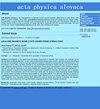地震波传播与地震运动的有限差分与有限元模拟
Q4 Physics and Astronomy
引用次数: 190
摘要
地震波传播和地震运动的数值模拟是研究地球结构、过程,特别是地震现象的不可替代的工具。在各种数值模拟方法中,有限差分法是地震运动模拟的主流方法。此外,它在地震勘探和构造建模中也变得越来越重要。同时,我们认为有限差分法在地震学中应用的最佳时期是在未来。本专著详细介绍了有限差分法(FD)、有限元法(FE)和混合有限元法(FD -FE)在地震波传播和地震运动建模中的应用。本文没有涵盖方法的所有主题和方面。我们把重点放在我们作出贡献的那些方面。我们提出了光滑弹性连续体的运动方程的备选公式。然后,我们开发了具有焊接材料界面和自由表面的典型问题的替代公式。我们继续用一个震源模型。我们通过一章关于弹性和粘弹性介质的本构律来完成一般理论介绍,并简要回顾运动方程的强公式。接下来的几章是关于有限差分和有限元方法的。我们开发了自由表面和焊接材料界面的FD靶。然后,我们提出了光滑连续体、自由表面和焊接界面的各种FD方案。我们主要关注交错网格和最优精度FD方案。我们还提出了有限元方法的替代公式。我们包括FD和有限元实现的牵引在分裂节点方法的模拟动态破裂传播。将FD建模方法应用于法国格勒诺布尔盆地深部沉积模型。将FD和有限元方法结合在一起,形成FD-FE混合方法。然后将混合方法应用于格勒诺布尔盆地的两种地震情景。除了第1章、第3章、第5章和第12章外,所有章节都包括新的、以前未发表的材料和结果。本文章由计算机程序翻译,如有差异,请以英文原文为准。
The finite-difference and finite-element modeling of seismic wave propagation and earthquake motion
Numerical modeling of seismic wave propagation and earthquake motion is an irreplaceable tool in investigation of the Earth’s structure, processes in the Earth, and particularly earthquake phenomena. Among various numerical methods, the finite-difference method is the dominant method in the modeling of earthquake motion. Moreover, it is becoming more important in the seismic exploration and structural modeling. At the same time we are convinced that the best time of the finite-difference method in seismology is in the future. This monograph provides tutorial and detailed introduction to the application of the finitedifference (FD), finite-element (FE), and hybrid FD-FE methods to the modeling of seismic wave propagation and earthquake motion. The text does not cover all topics and aspects of the methods. We focus on those to which we have contributed. We present alternative formulations of equation of motion for a smooth elastic continuum. We then develop alternative formulations for a canonical problem with a welded material interface and free surface. We continue with a model of an earthquake source. We complete the general theoretical introduction by a chapter on the constitutive laws for elastic and viscoelastic media, and brief review of strong formulations of the equation of motion. What follows is a block of chapters on the finite-difference and finite-element methods. We develop FD targets for the free surface and welded material interface. We then present various FD schemes for a smooth continuum, free surface, and welded interface. We focus on the staggered-grid and mainly optimally-accurate FD schemes. We also present alternative formulations of the FE method. We include the FD and FE implementations of the traction-at-split-nodes method for simulation of dynamic rupture propagation. The FD modeling is applied to the model of the deep sedimentary Grenoble basin, France. The FD and FE methods are combined in the hybrid FD-FE method. The hybrid method is then applied to two earthquake scenarios for the Grenoble basin. Except chapters 1, 3, 5, and 12, all chapters include new, previously unpublished material and results.
求助全文
通过发布文献求助,成功后即可免费获取论文全文。
去求助
来源期刊

Acta Physica Slovaca
物理-物理:综合
CiteScore
0.30
自引率
0.00%
发文量
0
审稿时长
>12 weeks
期刊介绍:
acta physica slovaca is an internationally recognised physics journal originally established in 1950. Since 1998 listed in Current Contents. Since 2006, acta physica slovaca publishes review and tutorial articles. Papers written by specialists in a given field are intended to be accessible also to non-specialists and PhD students. Although the printed version of the journal is available, all issues are free to download from the journal''s web page. We hope that the new issues of acta physica slovaca will be useful and interesting for readers.
 求助内容:
求助内容: 应助结果提醒方式:
应助结果提醒方式:


